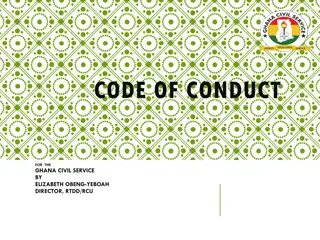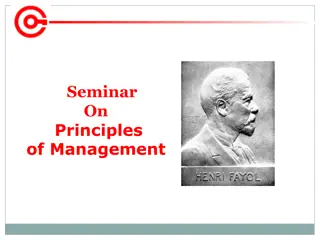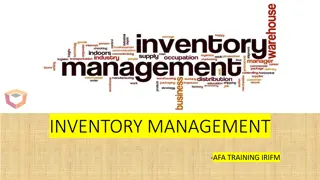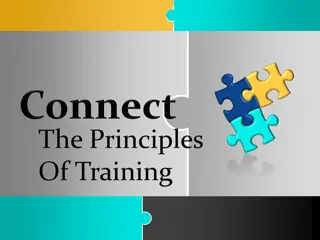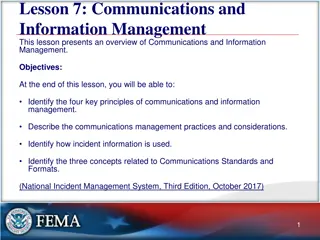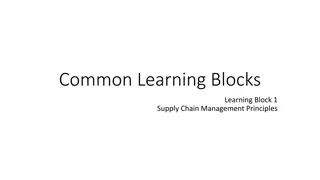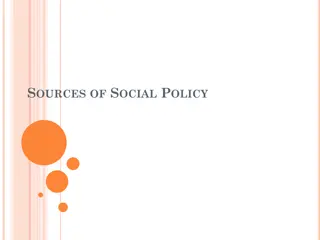Principles of Management
This module explores common organizational structures, the purpose of organization, factors in organizational design, current trends, and the advantages and disadvantages of various structures. It covers specialization, division of labor, hierarchy of authority, centralization, decentralization, formalization, departmentalization types, matrix organizations, and team-based structures.
Download Presentation

Please find below an Image/Link to download the presentation.
The content on the website is provided AS IS for your information and personal use only. It may not be sold, licensed, or shared on other websites without obtaining consent from the author.If you encounter any issues during the download, it is possible that the publisher has removed the file from their server.
You are allowed to download the files provided on this website for personal or commercial use, subject to the condition that they are used lawfully. All files are the property of their respective owners.
The content on the website is provided AS IS for your information and personal use only. It may not be sold, licensed, or shared on other websites without obtaining consent from the author.
E N D
Presentation Transcript
Principles of Management Module 6: Organizational Structures
Module Learning Outcomes Identify common organizational structures and the advantages and disadvantages of each. 6.1: Explain the purpose of organization 6.2: Describe common organizational structures and their advantages and disadvantages 6.3: Identify important factors for consideration in organizational design 6.4: Describe current trends in organization and job design
Learning Outcomes: The Purpose of Organization 6.1: Explain the purpose of organization 6.1.1: Explain the efficiencies created by specialization and the division of labor 6.1.2: Describe characteristics of organizational structures 6.1.3: List Edgar Schein's four common elements of an organization
Common Elements Common Purpose. Unifies employees and helps them understand organization s direction Coordinated Effort. Maximizes resources with the common purpose in mind- managers need to leverage employee skills and experiences Specialization and the Division of Labor
Common Elements Continued Hierarchy of Authority: Determines formal, position-based reporting lines and expresses who reports to whom CEO, business sales, office staff, customer service Centralization and Decentralization: Degree to that decision making is concentrated to the top of the organization (key decisions made by executive team) Formalization: Extent to which jobs within an organization are standardized
Learning Outcomes: Common Organizational Structures 6.2: Describe common organizational structures and their advantages and disadvantages 6.2.1: Differentiate between the four basic types of departmentalization (function, product, customer, and geography) Types of Departmentalization 6.2.2: Distinguish matrix organizations from traditional departments 6.2.3: Differentiate between team-based structures, networks, and modular organizations
Departmentalization Functional Structure Groups employees based on their expertise (e.g., operations and finance) Generally used to allow for a higher degree of specialization Product Structure Groups employees based on product lines (e.g., aviation and transportation) Generally used in organizations with multiple products Customer Structure Groups employees based on which customers they do their work for (e.g., outpatient and urgent care) Generally used in organizations that have products or services unique to specific market segments Geography Structure Groups employees based on their physical location Generally used in large organizations that span multiple regions
Matrix Organizations Organized by two dimensions (e.g., product and geography) Each employee will have two bosses Combines the localization benefits of the geography structure with those of the functional structure. Advantage: Provides both flexibility and more balanced decision making Disadvantage: Complexity which can lead to confusion
Practice Question 1 Nike has a complex organization structure. It is broken down to divisions for Manufacturing, Sourcing, IT, Procurement, and Operations/Technology. There are also divisions that specialize in Running, Men s Training, Women s Fitness, Soccer, Basketball, and Digital Sports. Nike s organization could be classified as this type of structure: 1. Functional 2. Product 3. Geography 4. Matrix
Team-based Structures, Networks, and Modular Organizations Team-based Structure. Focused on a few objectives and usually disbanded at project s end Team. Made up of people with complementary skills who are working toward a common purpose- created by grouping employees in a way that generates a variety of expertise Network Structure. Little bureaucracy and features decentralized decision making- holacracy which attempts to achieve control and coordination by distributing power Modular Organizations. Business that has areas that can be easily separated from company without jeopardizing it
Learning Outcomes: Factors Impacting Organizational Design 6.3: Identify important factors for consideration in organizational design 6.3.1: Identify aspects of the external environment that influence the design of an organization's structure 6.3.2: Identify aspects of the internal environment that influence the design of an organization's structure 6.3.3: Explain how business growth cycle affects organizational choices
External and Internal Environment External Greater external forces, greater complexity of external environment Internal Skill variety: degree to which job requires use of high-level skills Task identity: degree to which person is in charge of completing work Task significance: degree to which person s job affects customers Autonomy: degree to which person has freedom to perform their tasks Feedback: degree to which people learn how effective they are being
Growth Cycle 1. Creativity. Marked by early growth of company due to emphasis on product creation 2. Direction. Installs functional organizational structure with formal communication 3. Delegation. Marked by application of decentralized organizational structure 4. Coordination. Merging of local units into product groups and establish formal planning procedures 5. Collaboration. Takes collaboration with key leaders, managers, and employees to create better structure
Class Activity: Organization Design Design an organizational structure for the following hypothetical businesses: A mature manufacturing company with a narrow product line and customers world- wide. A startup software company. An apparel company with five brand businesses distributed internationally, A media company composed of several acquisitions with business focused on TV, film, internet and a streaming service.
Learning Outcomes: Current Trends in Organization and Job Design 6.4: Describe current trends in organization and job design 6.4.1: Explain the advantages of flatter organizational structures 6.4.2: Explain the benefits of employee empowerment 6.4.3: Explain the trend toward flexible work schedules
Understanding Current Trends in Organization and Job Design Flatter Organizational Structures: focuses on horizontal growth, digging deeper, expanding knowledge, and getting better at core competencies Employee Empowerment: trust employee s ability and give them the authority to make decisions Flexible work arrangements- reduced workload, compressed work weeks, and remote work
Practice Question 2 Studies have shown the recent trend of self-organizing teams, flexible work hours, employee empowerment, and flatter organizations fosters which of the following benefits? 1. Enhanced employee job satisfaction. 2. Increased employee engagement. 3. Improved customer service. 4. Increased productivity.
Quick Review Can you correctly explain the efficiencies created by specialization and division of labor? Are you now able to describe characteristics of organizational structures? Please list Edgar Schein s four common elements of an organization Can you differentiate between four basic types of departmentalization? Are you able to differentiate between team-based structures? Please distinguish matrix organizations from traditional departments
More Quick Review Can you correctly identify aspects of the external/internal environment that influence the design of an organization s structure? Please explain how business growth cycle affects organization Can you explain the advantages of flatter organizational structures? Please explain the benefits of employee empowerment Are you able to explain the trend toward flexible work schedules?


